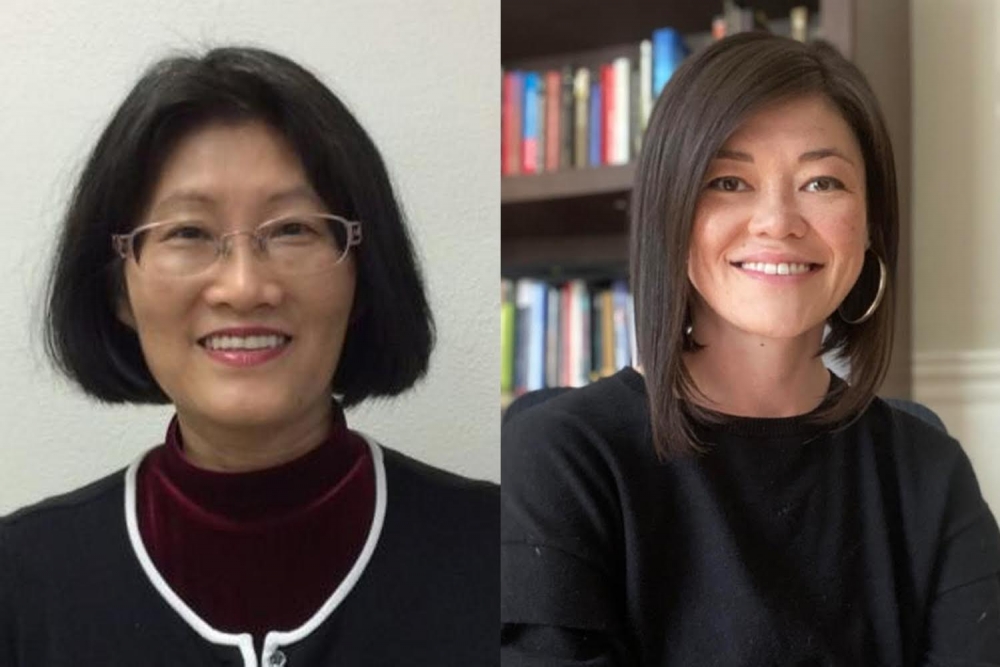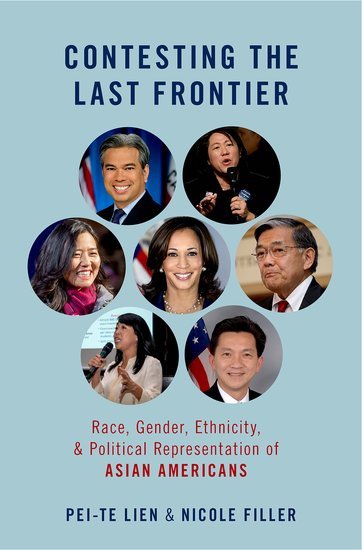
A Pioneering Collaboration

More than 20 years ago, Pei-te Lien’s “The Making of Asian America through Political Participation” (Temple University Press, 2001) won a best-book award from the American Political Science Association's Division on Race, Ethnicity, and Politics.
Since then, Lien — a professor of political science at UC Santa Barbara — has compiled a body of groundbreaking work on Asian Pacific American elected officials (APAEOs).
Her latest work, “Contesting the Last Frontier: Race, Gender, Ethnicity, and Political Representation of Asian Americans” (Oxford University Press, 2022), was co-authored with Nicole Filler, a UCSB alumna now with the Institute for Asian American Studies at the University of Massachusetts, Boston.
Through in-depth interviews with elected officials and campaign organizers, the book details the growth in number and influence of Asian Pacific Americans (APA) in local, state and national political arenas dating back to the 1920s.
Their work has been praised as an empirically rich and masterful assessment of APA political representation, with a keen insight on gender, historic trends and ethnic variations, among many other facets.
None of it, Lien said recently, could have happened without her students.
“This book is the outcome of a multi-year combined effort by a large group of undergraduate students and a handful of graduate students under my supervision at UCSB,” she said. “This is a story of successful faculty-student collaboration.”
For more about the project, The Current caught up with Lien and Filler for an interview via email.
The Current: As you’ve studied APAEOs, what have you learned about their initial motivation to hold elected office?
Pei-te Lien: Some wanted to help solve a local problem involving the schools their children were attending or the building of a megamall in the neighborhood, for example. Others, especially those with immigrant-refugee backgrounds, wanted to pay back to the community through public service. For some Asian women, their experience of being discriminated against at the intersection of racism and sexism was the motivation. Many arrived at the political scene without planning, as accidental partisans. But their lack of premeditation for public office did not mean a lack of determination to serve.
Nicole Filler: One of the patterns was that a small but sizable share of APAEOs ran because they saw serving in elective office as a means to advance social justice.
The Current: How have APAEOs overcome the most common barriers?
NF: The paradoxical view of Asian Americans as both overly successful and perpetual outsiders continues to be a barrier. To succeed, many adopted grassroots campaigns and maintained ties to grassroots community organizations. Some also leveraged their experiences from their involvement in mainstream partisan and nonpartisan organizations.
PL: As high as 40% of APAEOs were foreign-born, but all of them were U.S. citizens. The misconception of Asian Americans as perpetual foreigners and Chinese-communist sympathizers has plagued Asian American candidates from earning trust from white-dominant voters. Their involvement in local and national organizations, both partisan and nonpartisan, is part of their winning recipe.
A smart strategy of playing up the strengths of the positive image as fellow, hard-working Americans has helped. The growing presence and activism of Asian American community-based programs in leadership training and candidate development has also helped.
The Current: What can your research tell us about the national political climate at the highest levels as we head toward 2024?
PL: APA community leaders would like to highlight and celebrate the majority support among APA voters for Democratic party candidates. However, there is a small but continuous and growing presence of conservative GOP supporters among APA voters, candidates and elected officials. The partisan political polarization found in the APA community is emblematic of the national sentiment. Their lack of a glue to one political party could be considered a plus when this small community, if mobilized, could be a swing vote in any tight contest.
The Current: What else does your research tell us about the future of APAs holding elective office?
PL: I think the trend of growth in sheer numbers of those who hold elective offices and their diverse ethnic origins, socialization backgrounds, pathways to offices and places of representation suggest an inevitable rise and eventual success in contending the last frontier for an immigrant-majority community.
We also provide evidence to help people see that ethnic representation by APA women and men matters, and those on the progressive side of politics have helped advance justice and contribute to the making of the U.S. as a more equitable and inclusive democracy.
The Current: How did you meet and what were the circumstances that led to this book collaboration?
NF: I met Pei-te as a first-year Ph.D. student in the political science program. I took her graduate seminar on race, gender and ethnicity in American politics and later worked as a teaching assistant in courses on race, ethnicity and Asian American politics.
There were clear connections between my dissertation research on the backgrounds and lived experiences of grassroots APA community advocates and APA elected officials who work towards transforming the status quo.
PL: Nicole was my first research assistant in this endeavor. She became a co-author because she came to UCSB to study with me after reading my 2001 book, which was the nation’s first systematic effort to appraise the significance of Asian Americans as concerned citizens, voters, grassroots organizers, candidates and elected and appointed officials.
The Current: How did the idea come about to write “Contesting the Last Frontier”?
PL: This book is an expansion of the journey of discovery and exploration of the 2001 book. However, “Contesting the Last Frontier” only focuses on the rise and trajectories of those who made it to the U.S. political landscape as elected officials.
This focus can be directly attributed to my 15-year involvement as a co-principal investigator and co-author with three pioneering political science women in the Gender and Multicultural Leadership Project sponsored by the Ford Foundation.
In the writing of “Contested Transformation” (Cambridge University Press, 2016), where we systematically examined the nation’s rising presence and impacts of nonwhite women and men in elective offices, I could not but continuously feel frustrated by the relatively small numbers and marginalization of the Asian presence in multiracial politics.
The Current: What part did your students play?
PL: The opportunity to collect an updated and comprehensive dataset of Asian Americans in elective offices on a continual basis and without a budget was made possible by a selective and rolling group of undergraduate students who enrolled in UCSB’s Faculty Research Assistance Program between 2014–2021.
In addition, I received financial support from the Academic Senate faculty research grant program to hire several undergraduate and graduate student research assistants to conduct original interviews and collect published interviews, biographies and news reports.



